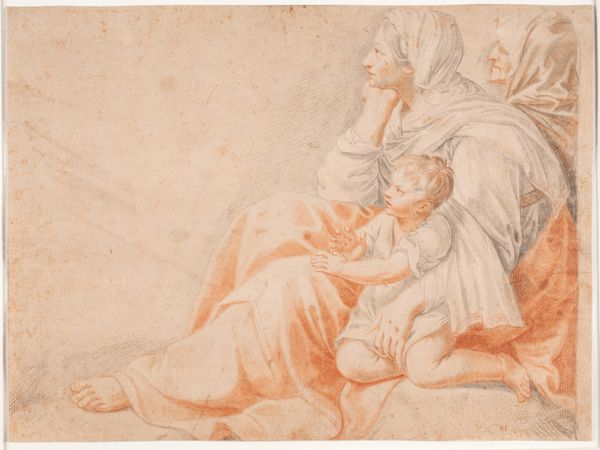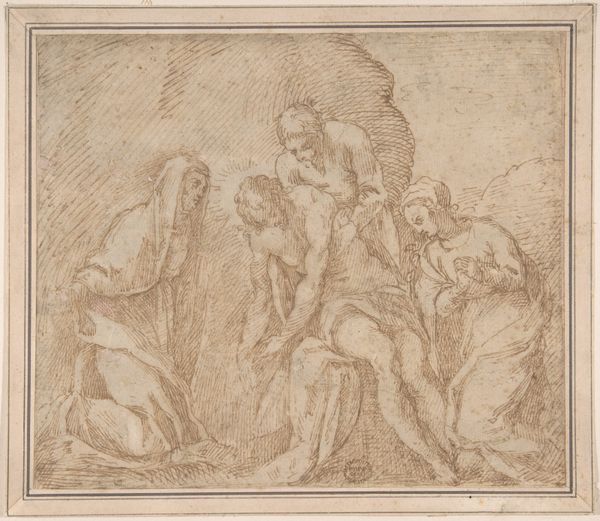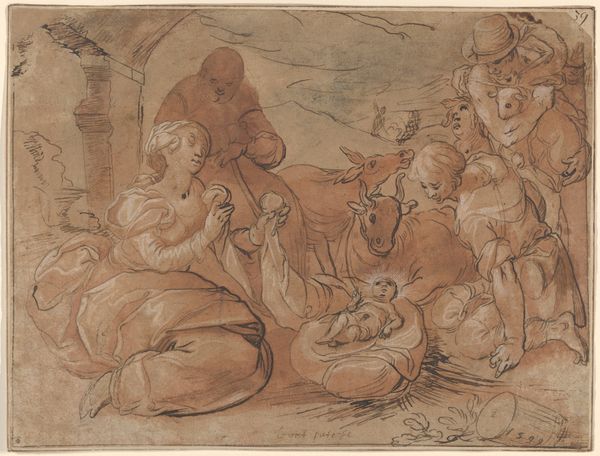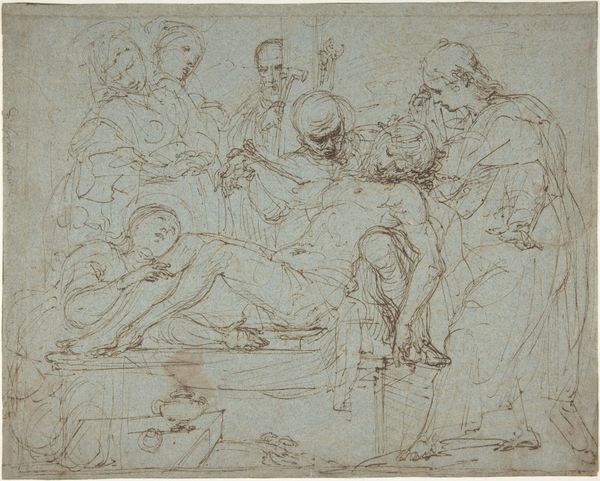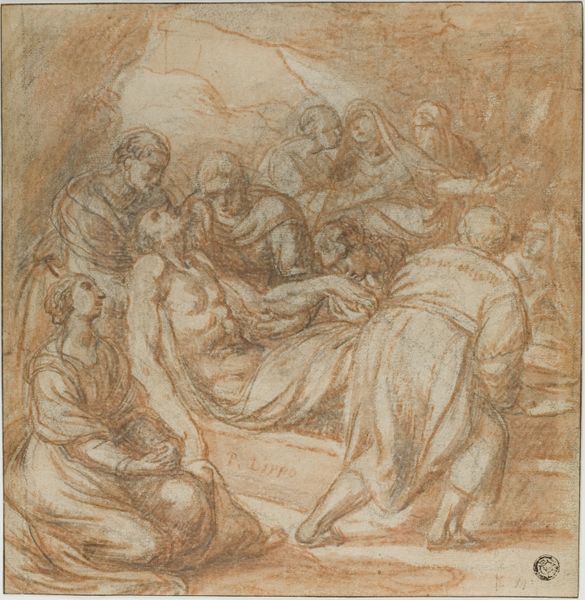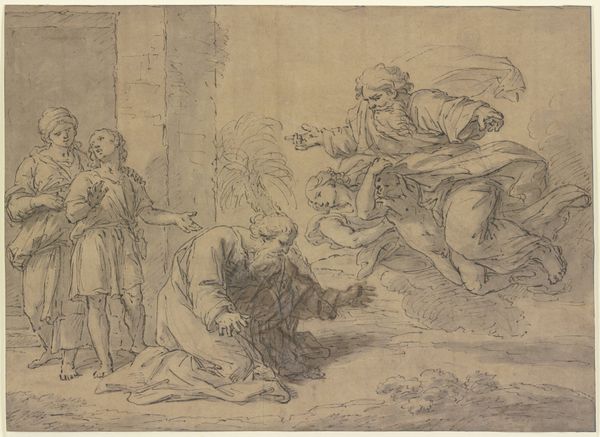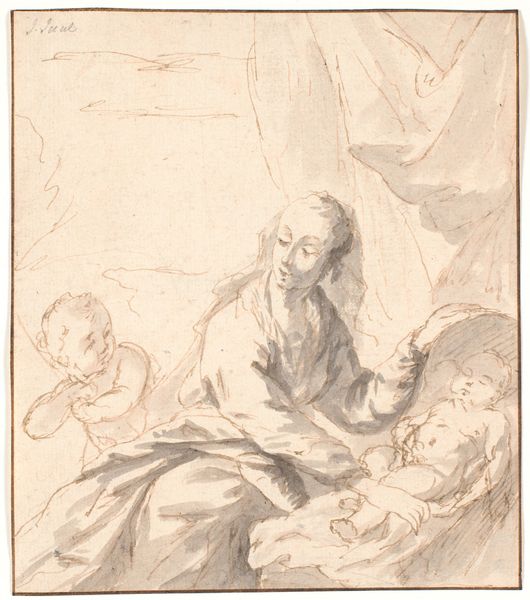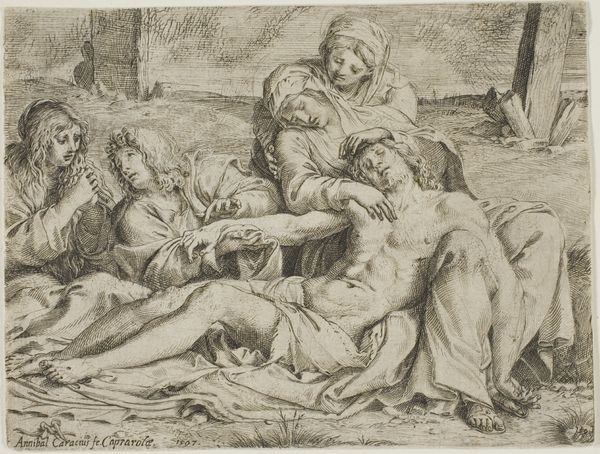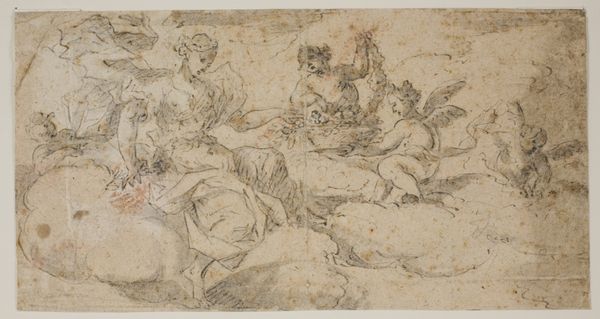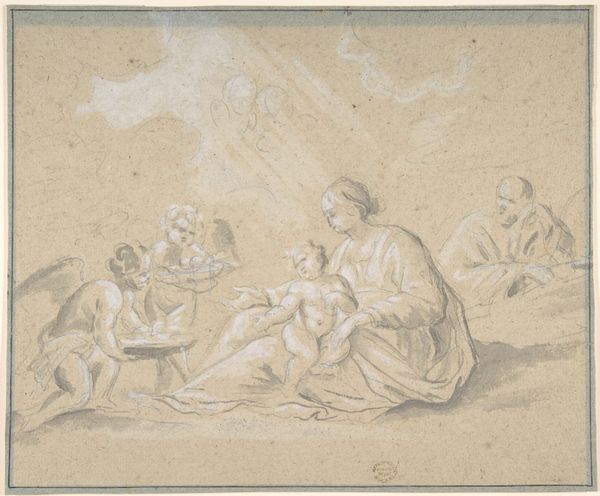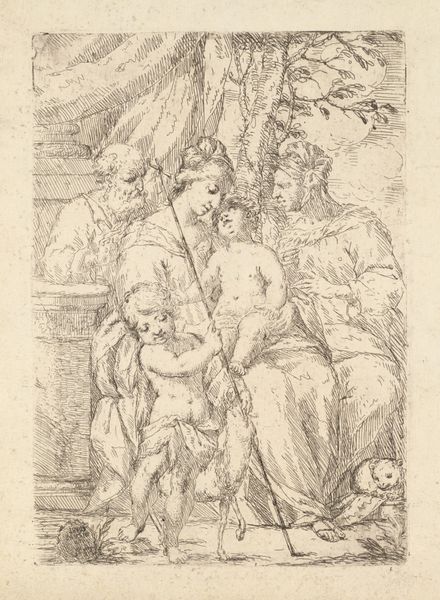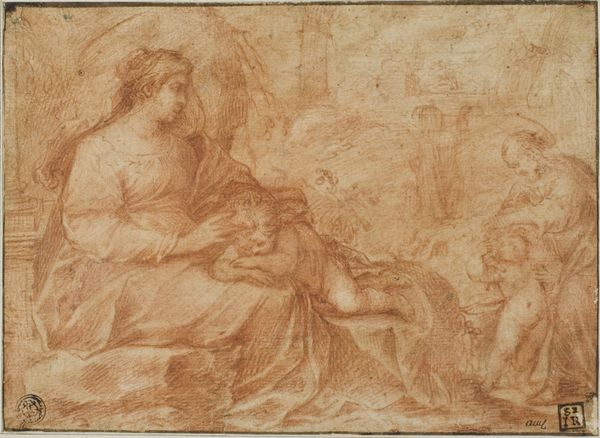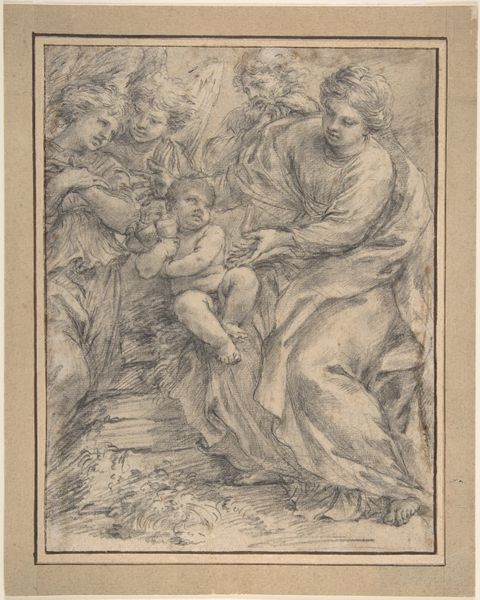
drawing, paper, chalk, charcoal
#
drawing
#
baroque
#
figuration
#
paper
#
chalk
#
line
#
charcoal
#
history-painting
Copyright: Public Domain
Curator: We’re looking at “Die Heilige Familie unter einem Baum,” or “The Holy Family Under a Tree,” a drawing rendered in chalk and charcoal on paper. It is attributed to Anthony van Dyck, the celebrated Baroque artist. Editor: The immediate impression is one of intimacy and a certain peacefulness, despite the unfinished nature of the sketch. The softness of the chalk contributes to this sense of tranquility. Curator: The materials really emphasize the human element here. Van Dyck uses the relative softness of the chalk to explore tonal variations across human flesh, especially in the rendering of the Virgin and children. Charcoal is reserved for creating a structural framework of darker, more defining lines in the overall scene, indicating that he prioritized human figures over, say, the tree looming overhead. Editor: The grouping certainly directs our focus. And I agree, it’s striking how that large, dark tree serves as a protective canopy. The positioning of the figures beneath it is suggestive, reminding us of the symbolism trees hold as providers and protectors throughout centuries of religious art. The embrace between mother and child further accentuates feelings of safety. Curator: Absolutely. Consider the Baroque period in which this piece originates; religious artwork served distinct socio-political purposes. For instance, sketches like this may have been preliminary designs for large, public-facing paintings of similar scenes to reaffirm public trust and support of religious institutions in times of socioeconomic hardship and uncertainty. Editor: I’m thinking more about the tender portrayal of motherhood. Mary is presented as pensive and grounded, distinct from many previous more ethereal and distanced artistic representations of the Virgin. This earthly depiction allows for greater personal and psychological resonance. Curator: Agreed. But don't overlook that the ready availability of chalk and charcoal allowed artists like Van Dyck to easily produce preliminary studies. These artworks weren’t only emotionally compelling, but practical given the cost and time necessary to produce large oil paintings. Editor: So, on one hand, a deeply felt portrayal of family… Curator: And on the other, the intersection of artistic intent and economic realities of the period! Editor: A fruitful union indeed.
Comments
No comments
Be the first to comment and join the conversation on the ultimate creative platform.
